CPR Water Tower Cranbrook BC
There were once hundreds of these octagonal shaped buildings across the Canadian Pacific Railway network. Used to feed boilers of the firm’s vast fleet of steam locomotives, they could be found at regular intervals up and down the line. In addition to fuel (coal or oil, depending) locomotives of the day had an insatiable appetite for water, which after turning to steam drove the wheels (in case you didn’t know). Presenting the historic CPR Water Tower Cranbrook BC.
Most of these structures were torn down with the change over to diesels, so only a few remain. This one’s the property of a museum and sits across the (still active) tracks from its original location. The former Elko BC train station and a couple vintage diesel locomotives share this space, right here beside the highway. We’ll look at those in another post down the road.
CPR Water Tower Cranbrook BC: taking us back to the days of steam locomotives, with
Chris Doering & Connie Biggart (BIGDoer/Synd)
Do the same…
These water towers were built to a fairly standardized plan and contained a wood staved (less often steel) tank enclosed by an outer wooden shell. The latter protected and insulated the interior from harsh weather. In Canada? Say it isn’t so!
For the coldest days, a small coal stove (or boiler) would warm the water just enough to keep it above freezing. A section man, whose job it was to patrol and maintain a specific segment of line, would keep the fire stoked and visit regularly when temperatures dropped below a certain threshold. Coal would be kept in a small bunker and filled by the maintenance of way department as needed.
A door into the structure would allow for maintenance and inspection of the all the inner workings and to access to the stove or boiler.
Depending on the set up, water would be dispensed into the locomotive tender in one of two ways. It could be via a spout on the side of the tower itself or via a single or multiple-head stand pipe not far away and fed via an underground line. The later would allow two or more locomotives to be filled at one time and it appears this tower had such a configuration, since it lacks a side spout.
Water would be pumped in (or gravity/pressure fed) from a nearby spring, lake, stream or town water source and from there, feed to locomotives by gravity. We suspect they pulled from the town supply here. A masted-ball acted on by a float, up on the roof, indicated the water level. High up means full and if low, empty (as today). It’s a simple but clever system.
The CPR’s Cranbrook Water Tower dates back to 1946 and this makes it a late example. It’s perhaps one of the last of the type built across the entire system and we found no records of any newer. Diesels were right around the corner by then and steamers operating on borrowed time.
This structure replaced an earlier one.
Most of these water towers fell out of use by the latter half of the 1950s as diesels took over and steam eliminated. Not all were torn down immediately, however, and many lasted into the ’60s or ’70s while sitting empty the whole time. The always frugal CPR did not want to spend money to get rid of them until absolutely necessary. Today there are only a handful left and most in some kind of restored state, like we see here.
This tower used to sit across the yard but moved to the present location in the 1990s by the museum. It’s still down by the tracks and as thought it’s still in use. The building has a height of just over thirteen metres and the tank capacity comes in at roughly 180k litres. That 40k Imperial gallons in the old system.
This style of tower was more common in the west we’re told, although they could be seen out east too and competitor Canadian National also used a similar design. Octagonal = eight sides and they we’re built in this shape perhaps for aesthetics, but we’ve not found an actual reason in any old papers. Anyone?
The former Elko BC train station, built in the early 1900s is located just down from the tower structure. It got moved here in the 1980s, after sitting empty for quite some time, and is a fine example of a small town depot. Not many of those left either.
A pair of 1950s era diesel locomotives are located on the station property and we’ll chat about them and the depot soon enough. Stay tuned.
The CPR has a yard in Cranbrook, but due to operational changes some years back, it’s little used these days. The trains still pass, but crew changes and such happen a bit to the east near Fort Steele. There’s an old roundhouse on the north side of the yard and we’d kill to see it.
The water tower, station and locomotives out front all belong to the Cranbrook History Centre (formerly Canadian Museum of Rail Travel). They have a large museum with numerous displays and countless rail cars a bit further west. It’s definitely worth a visit and it’s something we haven’t done in a long time, but think we should.
The museum was established in the 1970s and back then the main exhibit halls used to be roughly where the Elko station sits present day. As the collection grew larger in the latter half of 1980s, they moved to those larger digs.
Know more (new windows): CPR Octagonal Water Towers and Cranbrook History Centre.
Drop by often for lots of fresh and interesting content posted regularly.
They’re saying…
”Their photography is wonderful and I love to read the background stories to the images” Peg Strankman.
The locomotives and station on the grounds…
CPR #4090, #4469 & Elko Station.
Historic railway structures…
Camrose Heritage Railway Station & Park.
Hanna Roundhouse Revisited.
New Brigden Water Tower – another preserved.
If you wish more information on what’s seen here, don’t hesitate to: contact us!
Date of Adventure: July, 2022.
Location(s): Cranbrook, BC.
Article references and thanks: Cranbrook History Centre, The Canadian Directory of Water Towers and Donald Malcolm Wilson’s Crowsnest-Highway.ca website.
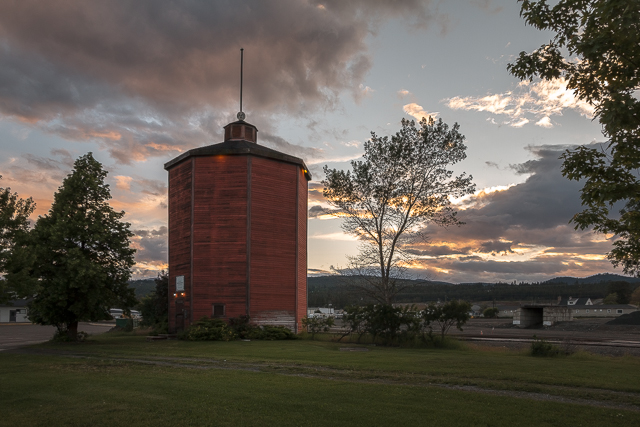
The historic CPR Water Tower Cranbrook BC.
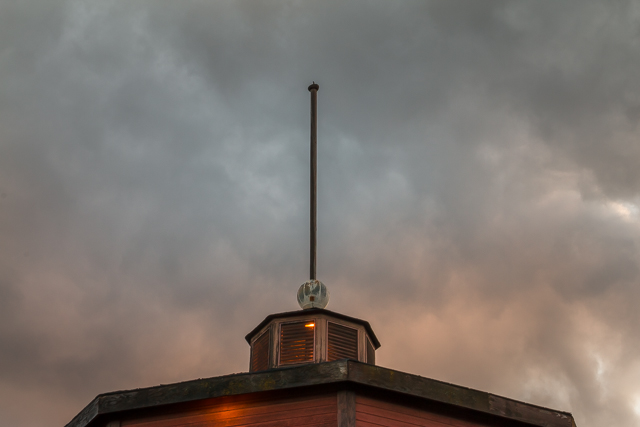
Ball indicates water level – here it shows empty.
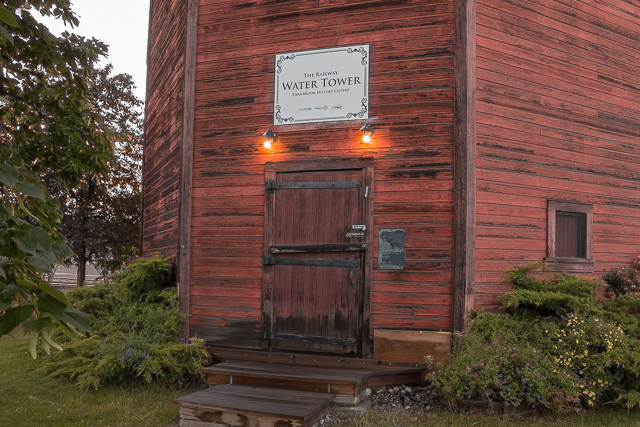
It once filled boilers of company steam locomotives.
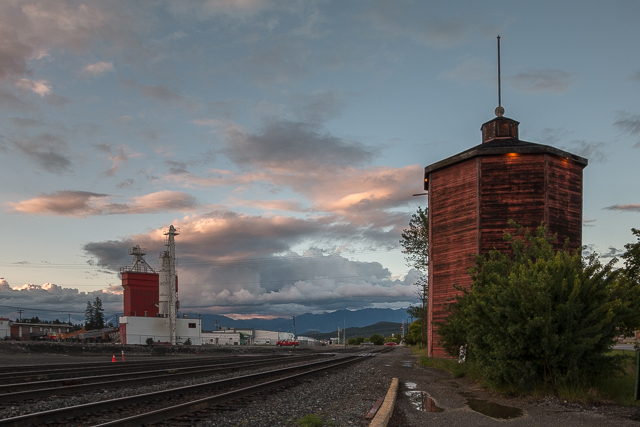
Down by the tracks as though still in use.
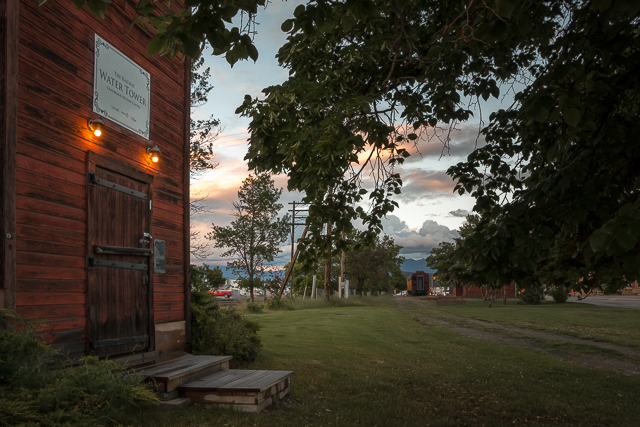
A local museum owns the tower.
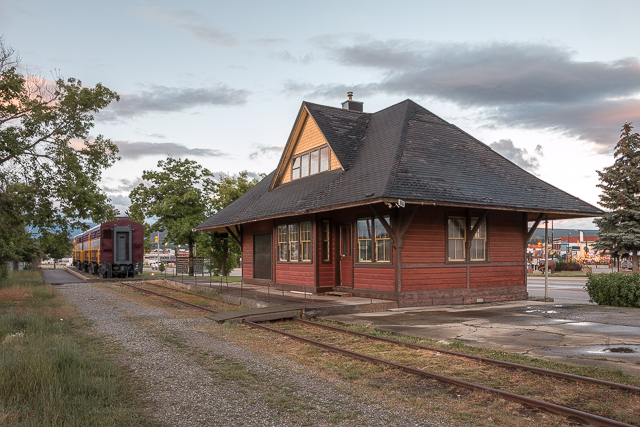
We’ll chat about this nearby display soon.

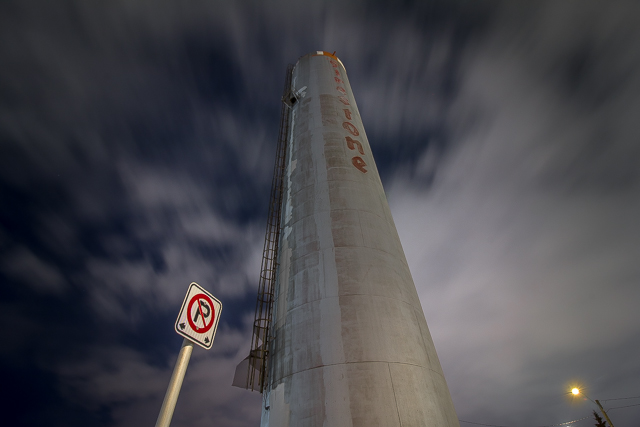
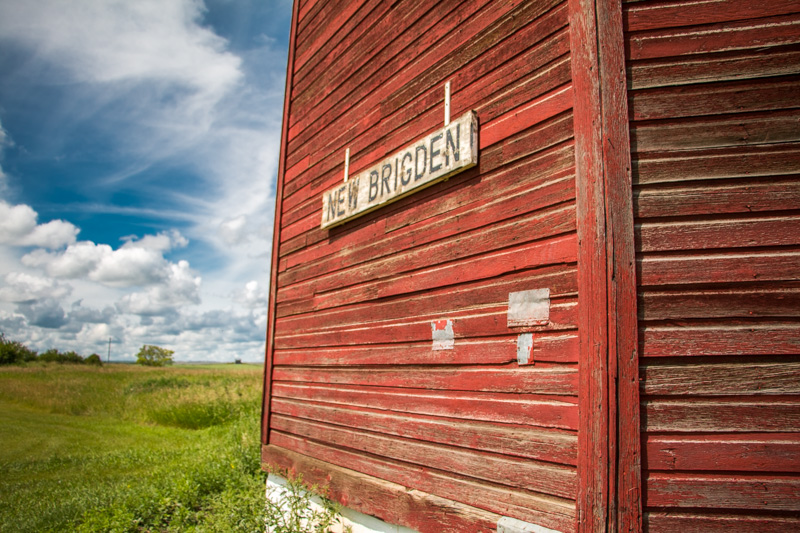
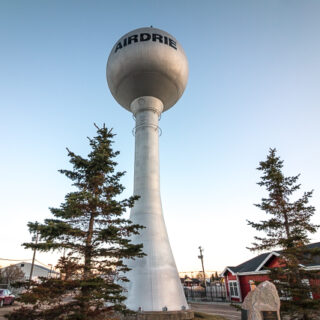
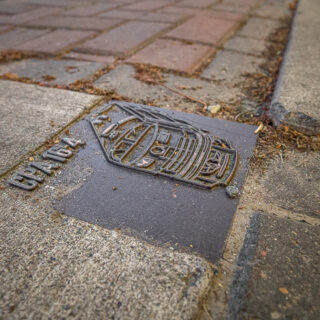
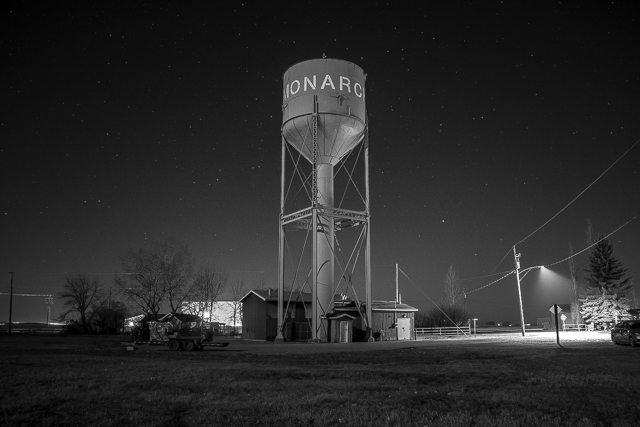
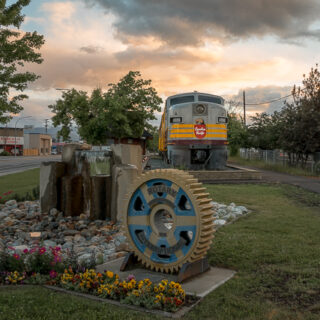
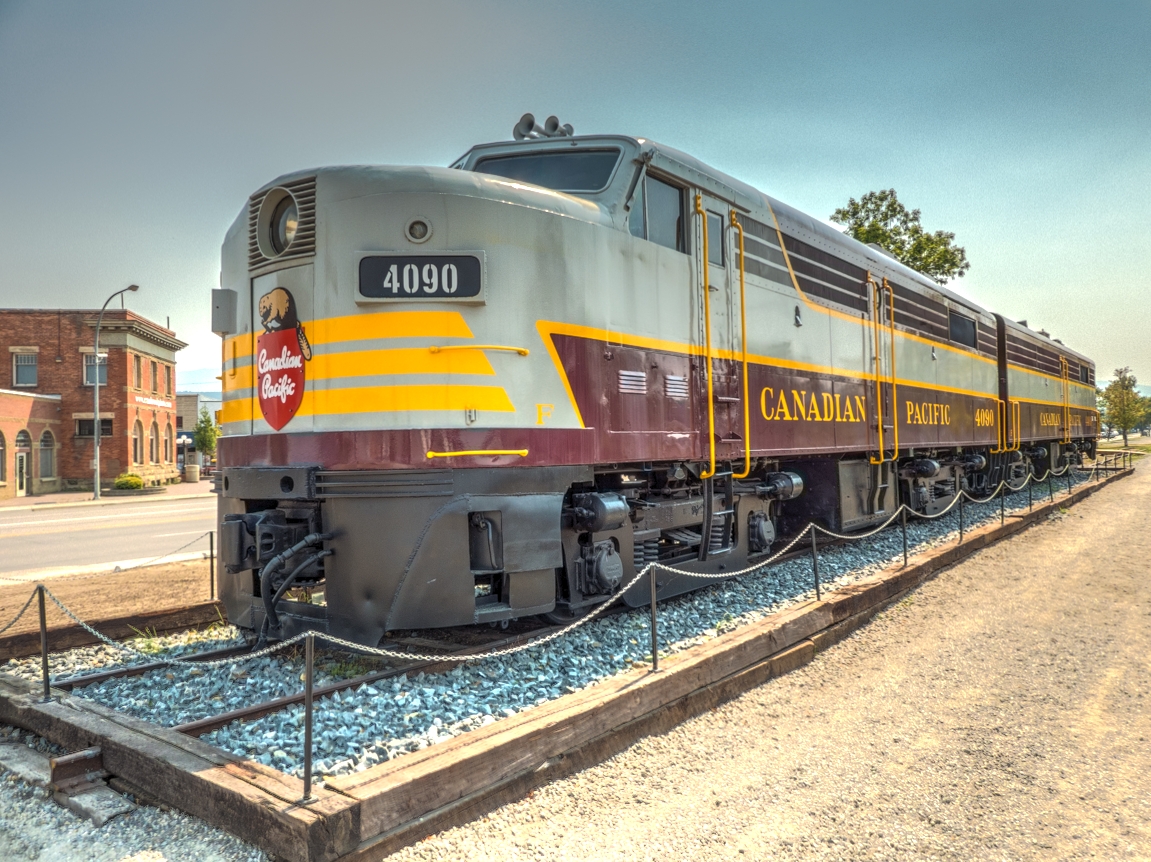
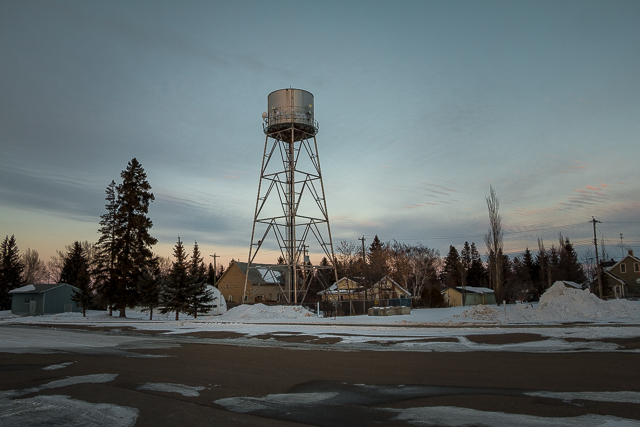
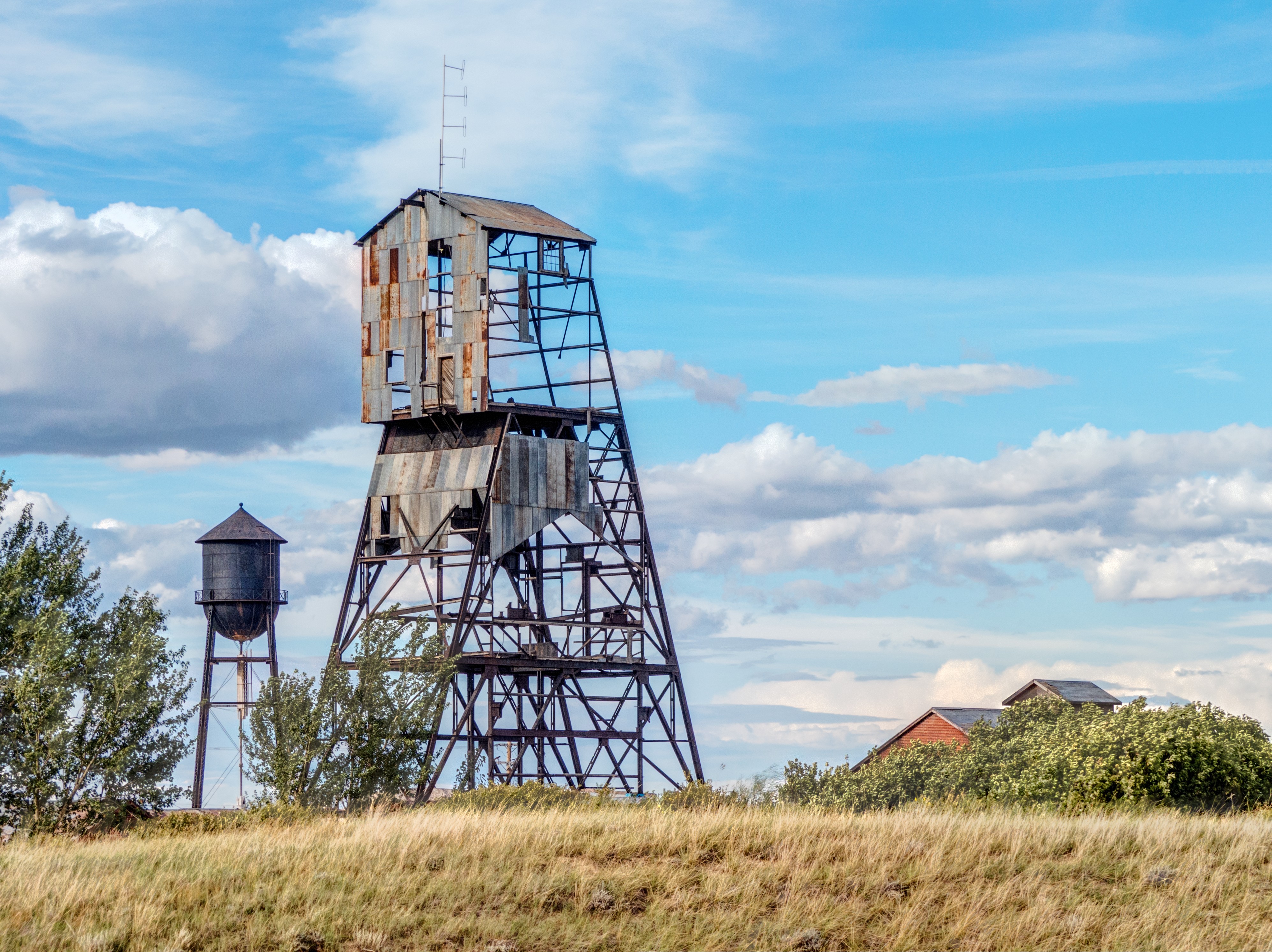
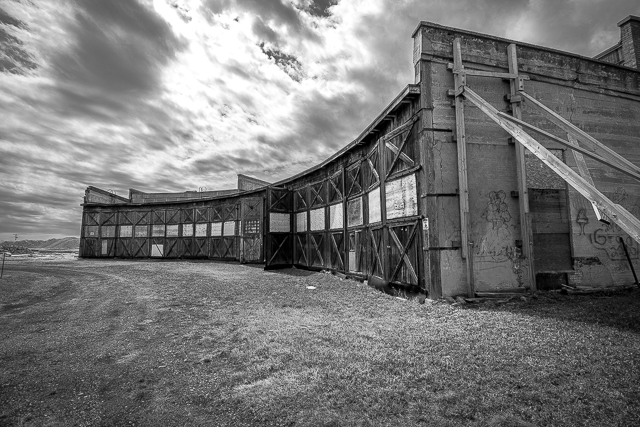
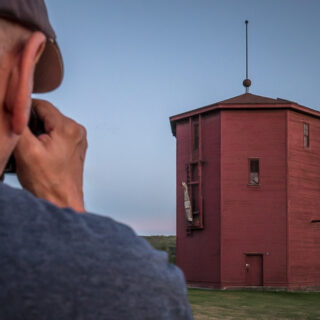
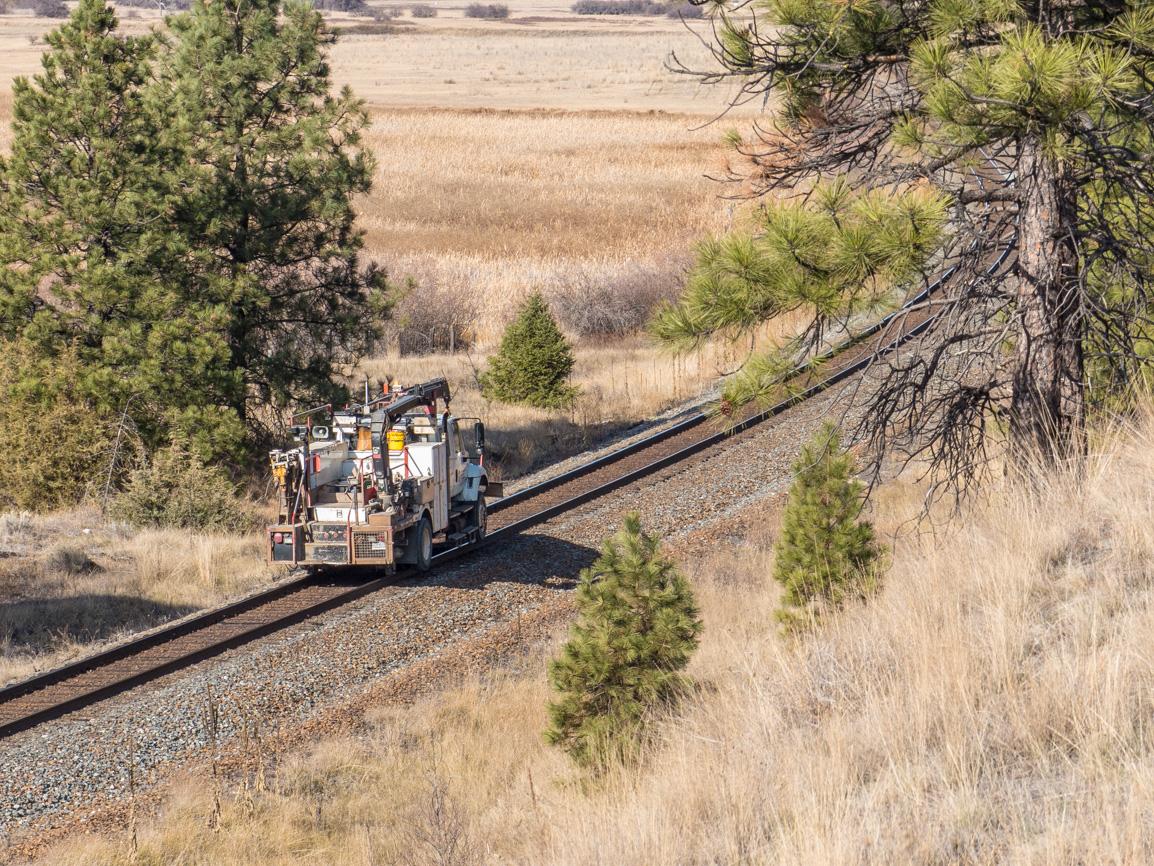







Nice! I have photographed a few trains by it on my previous visits to Cranbrook!
It would make a great backdrop. Share some photos sometime.
From October 2020
A round tank is much stronger than a square or rectangular one. Long straight walls are subject to deflection if not adequately reinforced with ribs or by added thickness. But round is much more complicated to construct. Perhaps the eight-sided design is a compromise…? Almost round, but with straight sides so easier to build. Just a guess on my part though…
Keep up the good work…!
Cheers,
ROB
That thought crossed our mind, but in spite of an exhaustive ten minute search, we found no reason why. Wish we could devote more time to it. Thanks for commenting!